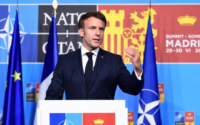The politics and strategy behind Narendra Modi’s outreach to the diaspora 2023
From June 21 to 23, Prime Minister Narendra Modi addressed the Indian-American community during his packed state visit to the US. June 23 at the Ronald Reagan Building and International Trade Center in Washington DC. This will be his fourth large community speech since taking office in 2014.
The “Howdy Modi” rally, held on September 22, 2019, in Houston’s NRG Stadium, was PM Modi’s last. Over 50,000 people, including many Indian-Americans, attended. Trump accompanied him.
A US president attending a foreign leader’s diaspora meeting in America was unusual. President Trump’s appreciation for PM Modi’s leadership and apparent self-interest were evident. In his re-election bid, the president aimed to court Democratic-leaning Indian-American voters.
The event highlighted US Indian-Americans’ growing influence. “Howdy Modi” demonstrated Indian diaspora strength.
Republicans and Democrats are courting Indian-Americans more. Indian immigrants comprise 1% of the US population yet pay 6% of its income tax. It’s America’s second-largest immigrant group. Over 40 Indian Americans hold US posts. Ami Bera, Ro Khanna, Raja Krishnamoorthi, and Pramila Jayapal represent the House. Several mayors exist. A research found 35 Indian-origin US judges, a record for the group.

Recent Indian-American politicians demonstrate the community’s rising influence. Kamala Harris, the first Indian-American and minority vice president, broke barriers. The second generation of Indian Americans became increasingly politically active. They aimed to influence local, state, and national policy and political discourse.
Indians dominate business.
Every Indian is proud that Sundar Pichai and Satya Nadella lead more than two dozen American enterprises. The Biden administration has appointed 130 Indian Americans to crucial posts, more than Trump and Obama.
Indian prime leaders routinely meet with Indian-Americans. They did that in other nations. Modi recognized their rising significance and reached out to them quickly after taking power. He found and connected Indian diaspora wherever he went. He portrays them as India’s ambassadors, promoting the country’s image, economic links, and political alliances.
Modi’s charismatic leadership style helps him connect with the Indian diaspora in many places. He has a close relationship with the diaspora due to his oratory talents and emotional connection. PM Modi realizes the diaspora is varied, like Indian society. He approaches all political parties.
He seems to have bonded with the lively Indian-American community in the US. He knows America is the only superpower. Visitors and lobbyists keep Washington DC bustling. Global governments compete for the president’s attention in the Oval Office. Indian-origin administrators serve in numerous ways.
Americans value reciprocity. Modi knows and offers Indian-Americans and other investors great prospects back home. At the “Howdy Modi” event, many top business figures from both nations were expected. It promoted US-India commerce and investment.
]The Pravasi Bharatiya Divas (Non-Resident Indian Day) and abroad Citizen of India (OCI) program, which gives abroad Indians perks and privileges, have also reinforced connections with the Indian-American community under PM Modi.
India has grown rapidly in the previous nine years. But big problems await. The Indian diaspora, especially in the US, can help India overcome these hurdles and expand smoothly.



